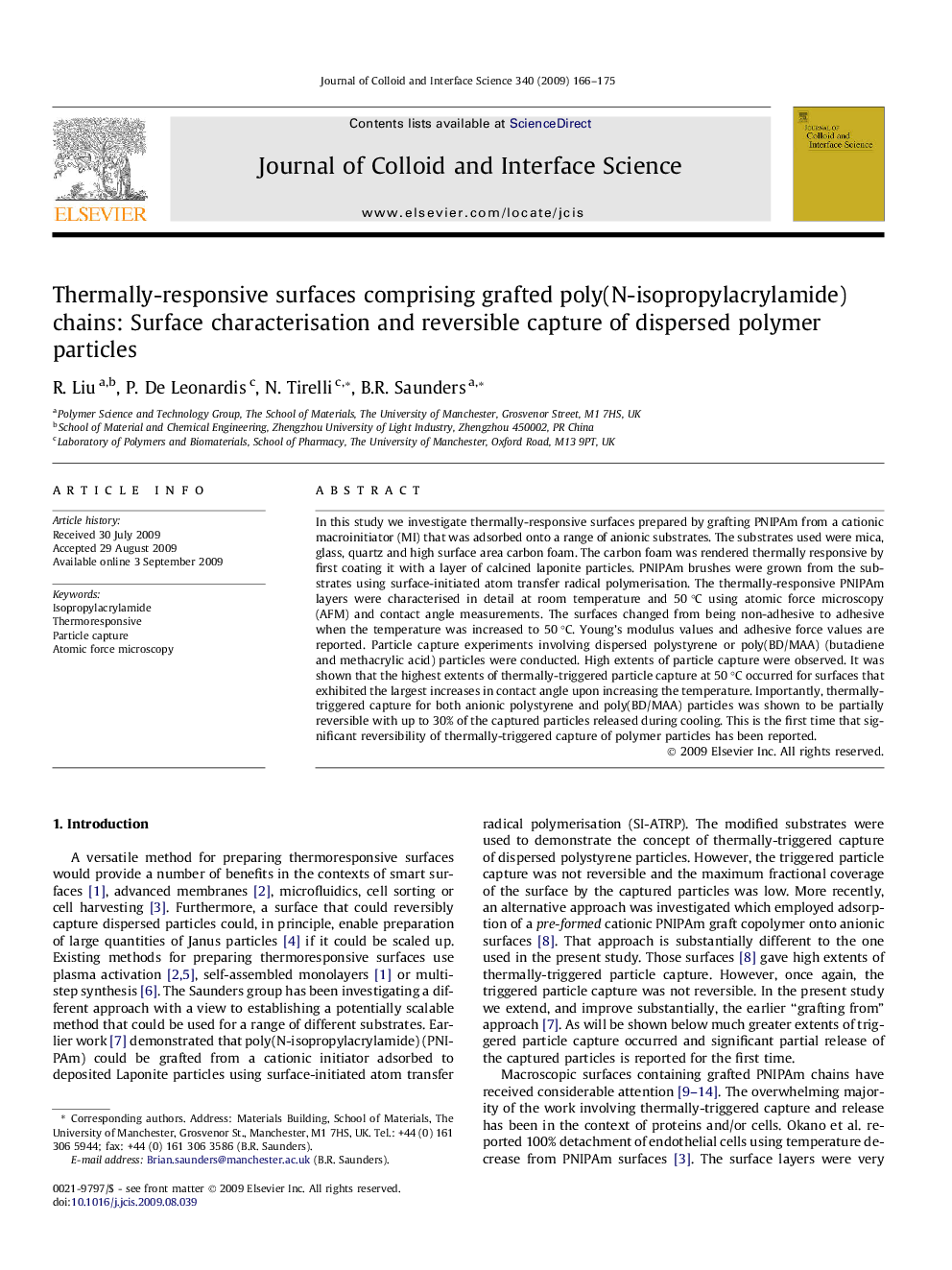| Article ID | Journal | Published Year | Pages | File Type |
|---|---|---|---|---|
| 610119 | Journal of Colloid and Interface Science | 2009 | 10 Pages |
In this study we investigate thermally-responsive surfaces prepared by grafting PNIPAm from a cationic macroinitiator (MI) that was adsorbed onto a range of anionic substrates. The substrates used were mica, glass, quartz and high surface area carbon foam. The carbon foam was rendered thermally responsive by first coating it with a layer of calcined laponite particles. PNIPAm brushes were grown from the substrates using surface-initiated atom transfer radical polymerisation. The thermally-responsive PNIPAm layers were characterised in detail at room temperature and 50 °C using atomic force microscopy (AFM) and contact angle measurements. The surfaces changed from being non-adhesive to adhesive when the temperature was increased to 50 °C. Young’s modulus values and adhesive force values are reported. Particle capture experiments involving dispersed polystyrene or poly(BD/MAA) (butadiene and methacrylic acid) particles were conducted. High extents of particle capture were observed. It was shown that the highest extents of thermally-triggered particle capture at 50 °C occurred for surfaces that exhibited the largest increases in contact angle upon increasing the temperature. Importantly, thermally-triggered capture for both anionic polystyrene and poly(BD/MAA) particles was shown to be partially reversible with up to 30% of the captured particles released during cooling. This is the first time that significant reversibility of thermally-triggered capture of polymer particles has been reported.
Graphical abstractWe investigate the interfacial structure and properties of thermoresponsive surfaces containing grafted poly(N-isopropylacrylamide) copolymer chains and demonstrate triggered release of captured polymer particles for the first time.Figure optionsDownload full-size imageDownload as PowerPoint slide
